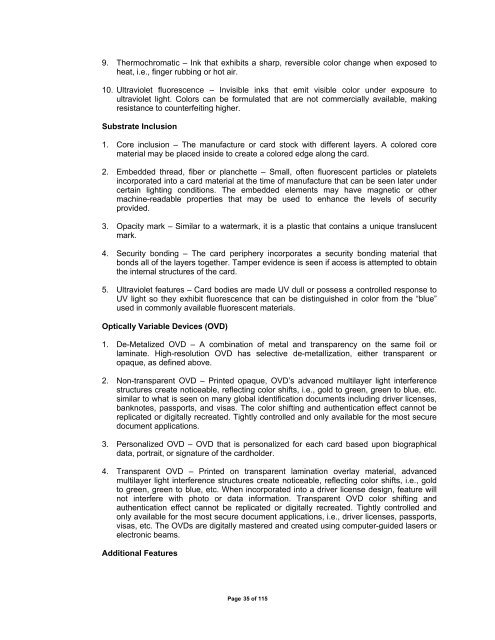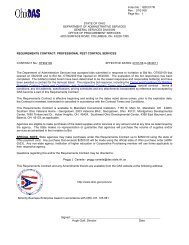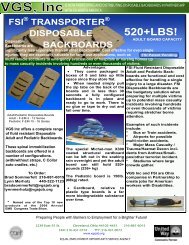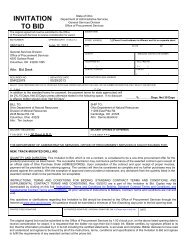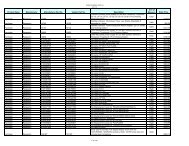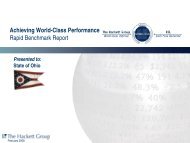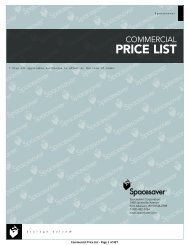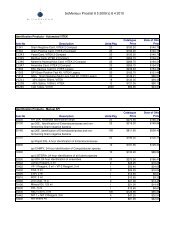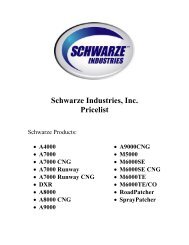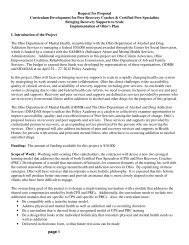REQUEST FOR PROPOSALS RFP NUMBER: 0A1031 DATE ISSUED
REQUEST FOR PROPOSALS RFP NUMBER: 0A1031 DATE ISSUED
REQUEST FOR PROPOSALS RFP NUMBER: 0A1031 DATE ISSUED
You also want an ePaper? Increase the reach of your titles
YUMPU automatically turns print PDFs into web optimized ePapers that Google loves.
9. Thermochromatic – Ink that exhibits a sharp, reversible color change when exposed to<br />
heat, i.e., finger rubbing or hot air.<br />
10. Ultraviolet fluorescence – Invisible inks that emit visible color under exposure to<br />
ultraviolet light. Colors can be formulated that are not commercially available, making<br />
resistance to counterfeiting higher.<br />
Substrate Inclusion<br />
1. Core inclusion – The manufacture or card stock with different layers. A colored core<br />
material may be placed inside to create a colored edge along the card.<br />
2. Embedded thread, fiber or planchette – Small, often fluorescent particles or platelets<br />
incorporated into a card material at the time of manufacture that can be seen later under<br />
certain lighting conditions. The embedded elements may have magnetic or other<br />
machine-readable properties that may be used to enhance the levels of security<br />
provided.<br />
3. Opacity mark – Similar to a watermark, it is a plastic that contains a unique translucent<br />
mark.<br />
4. Security bonding – The card periphery incorporates a security bonding material that<br />
bonds all of the layers together. Tamper evidence is seen if access is attempted to obtain<br />
the internal structures of the card.<br />
5. Ultraviolet features – Card bodies are made UV dull or possess a controlled response to<br />
UV light so they exhibit fluorescence that can be distinguished in color from the “blue”<br />
used in commonly available fluorescent materials.<br />
Optically Variable Devices (OVD)<br />
1. De-Metalized OVD – A combination of metal and transparency on the same foil or<br />
laminate. High-resolution OVD has selective de-metallization, either transparent or<br />
opaque, as defined above.<br />
2. Non-transparent OVD – Printed opaque, OVD’s advanced multilayer light interference<br />
structures create noticeable, reflecting color shifts, i.e., gold to green, green to blue, etc.<br />
similar to what is seen on many global identification documents including driver licenses,<br />
banknotes, passports, and visas. The color shifting and authentication effect cannot be<br />
replicated or digitally recreated. Tightly controlled and only available for the most secure<br />
document applications.<br />
3. Personalized OVD – OVD that is personalized for each card based upon biographical<br />
data, portrait, or signature of the cardholder.<br />
4. Transparent OVD – Printed on transparent lamination overlay material, advanced<br />
multilayer light interference structures create noticeable, reflecting color shifts, i.e., gold<br />
to green, green to blue, etc. When incorporated into a driver license design, feature will<br />
not interfere with photo or data information. Transparent OVD color shifting and<br />
authentication effect cannot be replicated or digitally recreated. Tightly controlled and<br />
only available for the most secure document applications, i.e., driver licenses, passports,<br />
visas, etc. The OVDs are digitally mastered and created using computer-guided lasers or<br />
electronic beams.<br />
Additional Features<br />
Page 35 of 115


